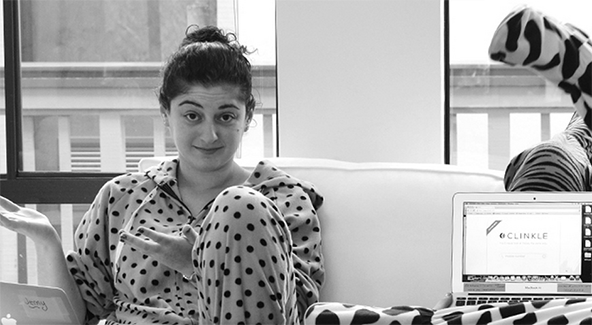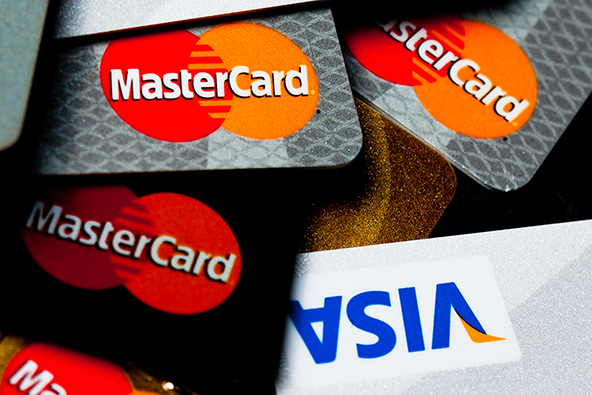An Invisible Mobile Payments App Wants to Change Our Lives

I am not the type who indulges in the sensational, but today I just can’t help but observe that I’ve never seen anything quite like the coverage of the latest mobile payments service to come our way. Yes, many have managed to cause a stir in the commentariat before and even modestly ambitious ventures have received generous coverage in the past — after all those of us who write daily about industry developments need fodder to sustain us. Yet, there is something different about the latest start-up which wants to fundamentally change the way we pay for things that stands out. No, it’s not that it is any more boastful than any of the start-ups that came before it and it is not that it got all these seed money from a pleiad of Silicon Valley investors (after all, these guys get things wrong far more often than they get them right).
No, the astonishing thing about Clinkle — as the start-up in question is named — is that its service does not yet exist. Not just that, but it is not expected to go live until sometime next year. May I say that a year is an eternity in the mobile payments industry? Things are happening so fast that there is absolutely no way of knowing how the m-payments landscape will look like a year from now. What we do know, however, is that Clinkle’s most formidable competitors — Square in particular comes to mind, but there are plenty of others as well — will continue to grow their share of the market and may even come up with a feature of their own that will closely resemble whatever it is that Clinkle will be doing. Moreover, the top dogs of the mobile payments world have more cash at hand than Clinkle can possibly hope to raise and are not afraid to use it. So no, I’m not nearly as thrilled about the newcomer’s potential, although I’ll refrain from passing judgment until I’ve actually seen it. But let’s review what already is known.
What We Think Clinkle Is
TechCrunch’s Billy Gallagher has the most detailed review of the invisible service. I have no way of knowing how accurate it is, but I also have no reason to doubt it. Gallagher gets his information from people who have tested Clinkle when the service was showed off in private to potential investors, as well as from a former Clinkle employee. Here is what he’s learned:
[T]he setup process was quick and simple: entering bank account information, setting a security code, and adding other friends who had the app. Clinkle uses a separate bank inside the app, called “Clinkle cash.” Users could transfer money back and forth from their bank accounts into “Clinkle cash.” These Clinkle dollars were then used for peer-to-peer and peer to merchant transactions.
“Anything that you would do with your wallet you would do now on your phone,” said a former employee who spoke on condition of anonymity. “That includes checks, credit cards, cash.”
Reportedly, Clinkle will connect its users’ phones to participating merchants’ checkout systems through high-frequency sounds. The advantage of their approach, the Clinkle guys believe, is that their connection method will be very simple to implement, unlike, say NFC-based services, which require that merchants get new point-of sale (POS) systems. But there are other mobile payments services — Starbucks’ foremost among them — which are based on already-ubiquitous technologies and when one asks how Clinkle is better than them, we get the usual platitudes:
They very clearly are trying to put your whole wallet in your phone, whereas other things are covering one element. Clinkle felt more like ‘I can just leave my wallet at home’.
That is not good enough for me, but it clearly is good enough for a number of investors.
Payments Are Hard
What are we to make of Clinkle’s chances to deliver on its lofty promises? Well, our starting point should be that the start-up will be facilitating mobile payments. Fortunately, the m-payments industry is no longer in its infancy and we already have some notable success stories, which we can examine in our attempt to calculate Clinkle’s odds. The biggest ones, surely, are Starbucks and Square, which took very different routes in their quests to bring m-payments to the masses.
Starbucks tapped into its huge customer base with the Mobile Pay app, which relied on the prosaic 2-D scanning devices that the coffee chain had already deployed in their stores and linked to the point-of-sale (POS) terminals. The app links the users’ phones to a Starbucks prepaid card account, which is debited each time a transaction is processed. This blogger didn’t like it, as the app could only be used at Starbucks and then only with a Starbucks-issued prepaid card. Imagine if we had to install an app for each store we shopped at. But consumers loved it and Starbucks is reportedly processing four million transactions a week, up from two million at the end of 2012. It was simple and it worked. Crucially, Starbucks didn’t need anyone’s permission to deploy the Mobile Pay app in its own stores.
Square, in contrast, targeted a sizable niche that had been completely neglected by the traditional payment processors — very small merchants like plumbers and Craigslist sellers. These “merchants” were in need of credit card processing, but no one was willing to offer it to them. Square launched a massive marketing campaign and is now processing $15 billion in transactions on an annualized basis. What made Jack Dorsey’s start-up so incredibly successful was the fact that hundreds of thousands of small merchants badly needed what he had to offer.
Well, neither of the preconditions that made possible the success of Starbucks and Square is present in Clinkle’s case. On the contrary, not only does the start-up have to convince users that its app is better than the myriad of competing services that are already available, but it would also have to convince store owners to adopt it and not some of the competitors’ offerings. Each of these challenges is huge on its own, but taken together, and considering that when Clinkle finally goes live sometime in 2014 its competitors will have had the market to themselves for several years, they seem almost insurmountable.
The Takeaway
ReadWrite’s Dan Rowinski has a great piece on the whole Clinkle thing. He juxtaposes Clinkle and LevelUp and observes that “good software, an interesting business model based on incentives and a burning desire to take over the world weren’t enough” and that LevelUp needed sales people to expand into new markets, which he believes is what Clinkle will have to do as well. Yet, Rowinski observes, even though the “sales force has probably been LevelUp’s single biggest cost sink”, the processor is only “doing moderately well”, “it’s still very small” and “its prospects of taking over the world of payments appear rather slim”. Rowinski believes that the same rather unglamorous fate awaits Clinkle. I agree.
Image credit: Clinkle.com.


